A gift from German breeders - Libella cucumbers (Libelle)
The cucumber hybrid Libelle is known mainly in the European part of Russia. This is one of the most productive crops grown in our country. At the same time, its cultivation does not present any particular difficulties - the main thing is to know the basic rules and subtleties, which we will discuss later.
Description of the hybrid
Libelle F1 - mid-season hybrid of the first generation, bred by breeders from Germany. It is grown mainly in the Central and Northwestern regions of Russia.
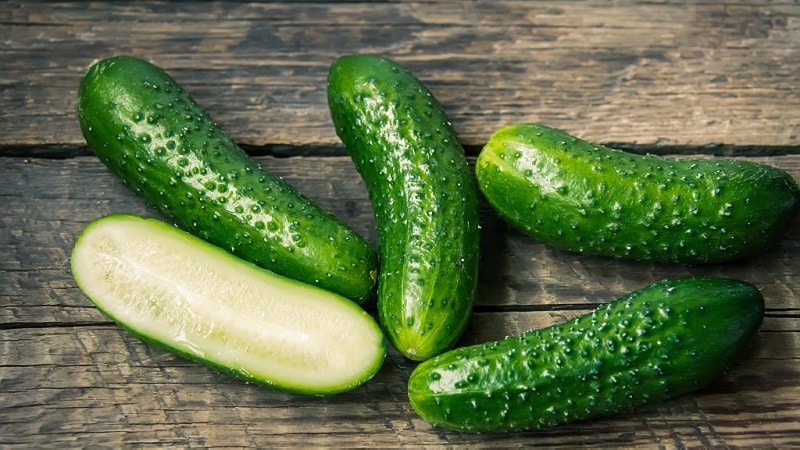
Composition and benefits of cucumbers
100 g cucumbers contain:
- water - 90-95 g;
- proteins - 0.6 g;
- fats - 0.1 g;
- carbohydrates - 3.6 g;
- calorie content - 15 kcal.
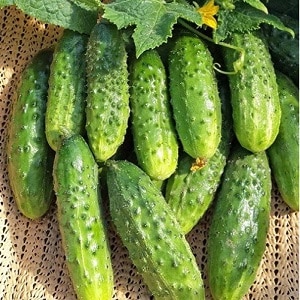 Cucumbers contain vitamins and microelements (iodine, copper, manganese, phosphorus). These substances have a beneficial effect on the body:
Cucumbers contain vitamins and microelements (iodine, copper, manganese, phosphorus). These substances have a beneficial effect on the body:
- promote food absorption;
- reduce stomach acidity levels;
- help with kidney and liver diseases, rheumatism and diabetes;
- improve the functioning of the thyroid gland.
Characteristics
The root system of cucumbers is poorly developed and goes shallow into the ground. The bushes are covered with a large number of leaves with a large leaf area. The fruits, which have an elongated shape, reach a length of 10-15 cm and a weight of 0.1-0.15 kg when ripe.
The surface of the fruit is covered with small tubercles and small white spines. They have juicy, crispy and pleasant-tasting flesh without a bitter aftertaste.
Libelle is notable for its high yield. With good care and favorable conditions, up to 4-5 kg (maximum 8-10 kg) of fruit can be collected from one plant per season. When growing in open ground, such a high result is not always achievable.
How to grow your own
Cucumbers can be planted from seeds or pre-grown seedlings. In the Russian climate, to obtain an early harvest, summer residents mainly use seedlings grown on the windowsill.
Landing
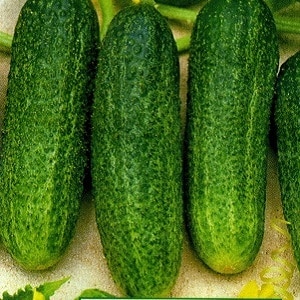 For growing seedlings prepare peat tablets or cups of sufficient volume and substrate. The latter would be a vegetable soil mixture purchased in a store, or soil from your site that has been calcined and disinfected.
For growing seedlings prepare peat tablets or cups of sufficient volume and substrate. The latter would be a vegetable soil mixture purchased in a store, or soil from your site that has been calcined and disinfected.
Before sowing, planting material is sorted, immersing in salt water (a tablespoon of salt per glass of warm water). The seeds that float to the top are thrown away, the rest are allowed to dry and planted in pots (if grown through seeds, directly into open ground).
Attention! When unpacking seeds purchased in a store, pay attention to their appearance. The seeds, covered with a colored shell, have already been processed. Before planting, seeds without shells are soaked in a manganese solution or in hot water (+50-55 °C) for 20 minutes to disinfect their surface.
At the turn of April and May, seedlings or seeds can be transplanted into open ground. This is done no earlier than several full-fledged leaves have formed on the plant, and warm weather without night frosts has established outside the window. It is advisable to place the cucumber bed in an unshaded and windproof place.
Before planting, the top layer of soil is loosened, Places for holes 1.5-2 cm deep are marked at a distance of at least 30 cm from each other. For 1 sq. m.The beds will accommodate 3-4 plants. Along with the seeds or seedlings, place a little rotted compost in the holes.
Transplanting seedlings is painful for plants, so it is planted together with a lump of earth, carefully removed from the pot (if necessary, the dimensions of the holes are expanded). In this sense, planting with peat tablets is preferable.
Growing and care
After planting, seeds or seedlings are watered with warm water. In the first days, the bed is covered with thick cloth at night to protect the cucumbers from the cold.
Optimum air temperature – +25-27 °C, soil – +20 °C. When the air temperature drops below +10 °C, the yield and immunity of the plant are sharply weakened, and growth slows down. At temperatures above +35 °C, fertilization becomes impossible.
The plant needs soils rich in humus and microelements. The hybrid grows well on any type of soil, be it loam, sandy loam or black soil. Soils with a high level of acidity and a predominance of clay are undesirable. Soil acidity is reduced by adding dolomite flour or lime (1 liter per sq. m of bed), excess clay by adding coarse sand.
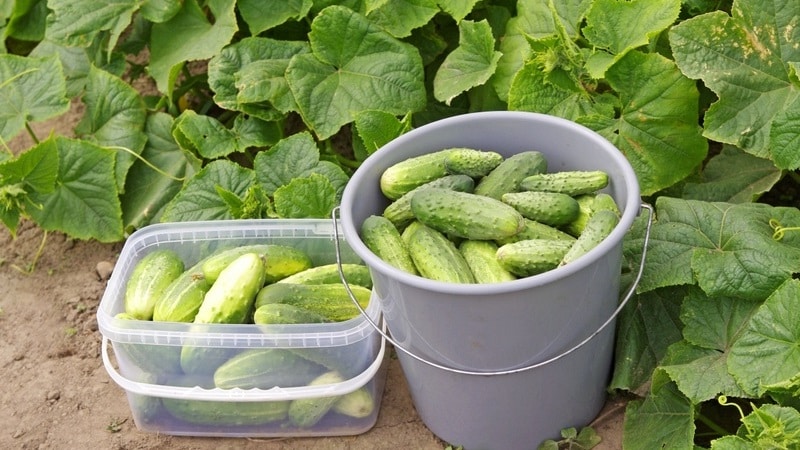
The first application of fertilizers is permissible 2-3 weeks after planting. In the future, fertilizers are applied no more than once a week, alternating mineral (potassium supplements, wood ash) and organic (infusion of fresh cow manure).
Plants love when the soil and air are saturated with moisture.. Due to the high rate of evaporation of moisture from the leaves, the plant’s water metabolism is intense. Therefore, it is important to provide abundant and regular watering cucumber beds. Watering with cold or tap water is not allowed.
Features of cultivation and possible difficulties
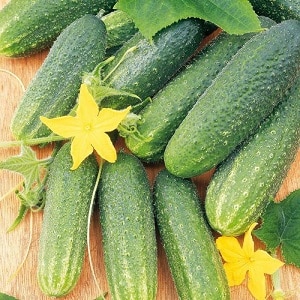 Cucumber yield Libella depends on the experience of the gardener, as well as on factors such as temperature and humidity, the number of sunny days, and pest activity. In practice, abundant harvests of cucumbers are harvested only once every 4-5 years. However, even in less successful years, the yield remains at a good level. Growing in a greenhouse increases overall yield.
Cucumber yield Libella depends on the experience of the gardener, as well as on factors such as temperature and humidity, the number of sunny days, and pest activity. In practice, abundant harvests of cucumbers are harvested only once every 4-5 years. However, even in less successful years, the yield remains at a good level. Growing in a greenhouse increases overall yield.
Cultivation in a greenhouse complicates the process of pollination by bees and, accordingly, the formation of fruits. Therefore, it is recommended to regularly ventilate the greenhouse so that pollinating insects can enter it (but do not allow drafts). Cucumbers tend to grow long shoots, so adult plants need support.
Libella cucumbers Can also be grown on the balcony. In this case, it is important for the soil container to have a volume that does not restrict the growth of roots, and the balcony itself must be regularly ventilated.
Diseases and pests
Libella demonstrates excellent resistance to many diseases, and, above all, olive spot and powdery mildew.
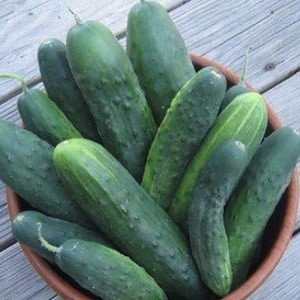 However do not forget about precautions:
However do not forget about precautions:
- Powdery mildew - almost not dangerous for Libelle. Appears when there is high air humidity (for example, as a result of air stagnation in a greenhouse), sudden temperature changes or watering with cold water. Symptoms: white spots of powdery coating on the leaves, spreading to the shoots and stems, gradual drying of the plants. Treatment: destruction of affected leaves, spraying with a solution of copper sulfate and fungicides.
- Olive spot (cladosporiosis) - occurs at high humidity and sharp temperature fluctuations. Symptoms: small ulcerations and brown spots on leaves and stems, drying and crumbling of the plant, deformation of the stems, cessation of growth. It flows quickly.Treatment: fungicides, ventilation of the greenhouse.
- Root rot - withering and drying of all parts of the plant. Risk factors are stagnation of water and excess nitrogen in the soil, sudden temperature changes. Treatment: replacement or disinfection of the top layer of soil, destruction of all affected plants.
- Aphid - can be treated by spraying an infusion of wood ash or garlic.
Harvesting and application
The fruiting phase of plants begins approximately 50-60 days after sowing. Harvesting begins in June, with peak yields occurring at the end of summer. The fruits quickly outgrow, so it is not advisable to delay their collection.
Important! Unripe fruits (“greens”) are healthier and much tastier than overripe ones.
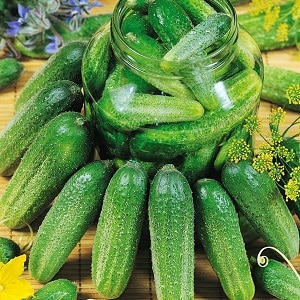 Cucumbers can be eaten in any form: raw, add to homemade preparations or salads. Due to their attractive appearance and long shelf life, Libella cucumbers are well suited for sale in markets and stores. The collected fruits have good shelf life and retain useful substances until spring.
Cucumbers can be eaten in any form: raw, add to homemade preparations or salads. Due to their attractive appearance and long shelf life, Libella cucumbers are well suited for sale in markets and stores. The collected fruits have good shelf life and retain useful substances until spring.
In some cases, cucumbers may have a bitter taste or unsightly whitish spots on the skin. Bitterness to the fruits imparts cucurbitacin, a substance that prevents the formation of tumors. Therefore, bitter cucumbers are no more harmful, and even healthier than ordinary ones, and they can be safely mixed into salads.
Advantages and disadvantages
Libelle cucumbers have both strengths and weaknesses. See the table below for more details.
| Advantages | Flaws |
|
|
Reviews
Let's give several reviews from summer residentswho have already tried Libelle cucumbers.
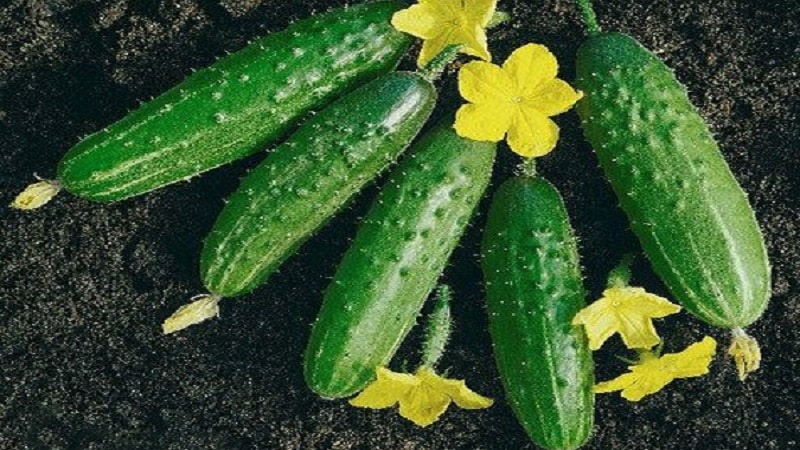
Daria, Kazan: “We have been growing Libella cucumbers for the third year now and their harvest has never disappointed. When I planted them for the first time, I didn’t expect much, since the soil on our site is far from ideal. But the cucumbers still turned out delicious. We will continue to plant them in the future.".
Irina, Moscow: “I have always been distrustful of photos and descriptions of varieties on the packaging, so when I first bought a bag of Libella cucumber seeds, I was incredulous. The seedlings did not germinate very well and did not look good, but after being transplanted into the garden, the cucumbers began to grow better. I was especially pleased with the harvest - tasty, juicy and abundant. I recommend".
Pavel, Orenburg: “The hybrid was disappointing. We took some seeds for testing and the cucumbers turned out bitter. It’s difficult to say why this happened. I have no desire to plant for next year.”.
Conclusion
Libelle cucumbers are an excellent choice for a novice gardener and summer resident who wants to get abundant harvests of delicious cucumbers. Growing them is possible in almost any conditions: outdoors, in a greenhouse and on the balcony and does not require a lot of money and time.